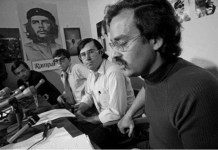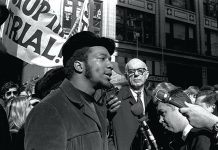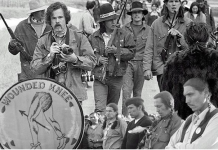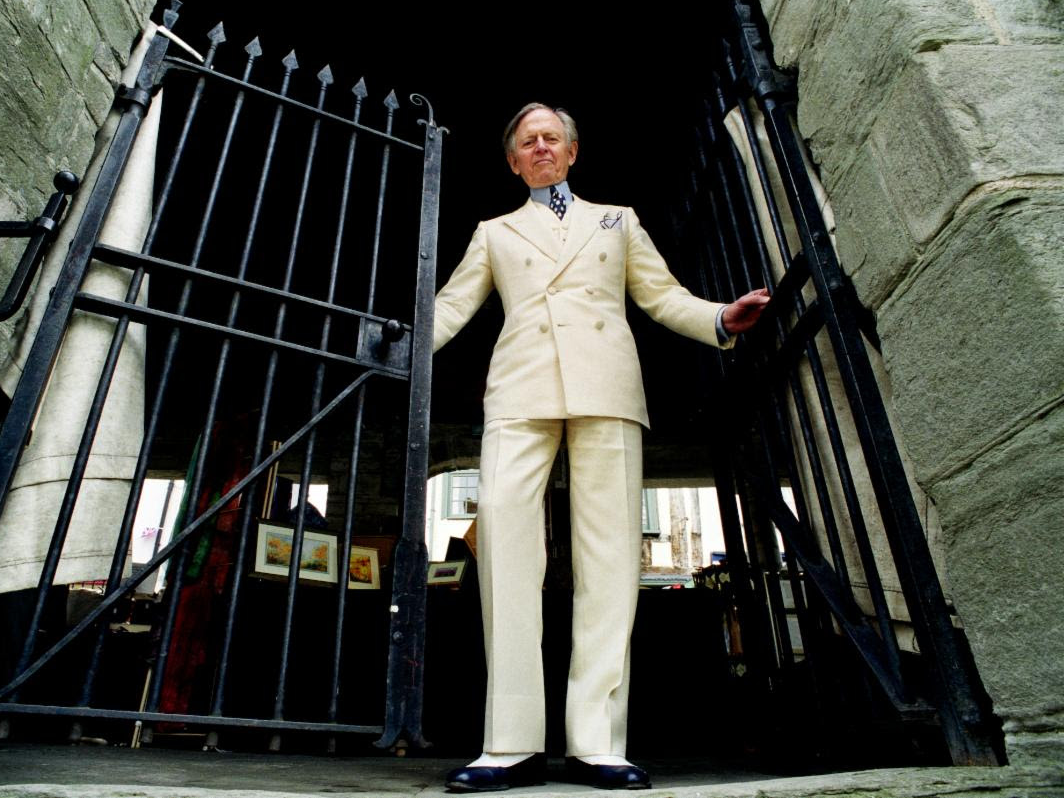
Thomas Wolfe’s Book Radical Chic Mocked Supporters of the New Left and Helped Deflate Political Activism in the 1970s
Richard Dewey’s Radical Wolfe is a stylish, enjoyable documentary about iconic 20th century American writer Tom Wolfe. Along with Hunter Thompson, Truman Capote and Norman Mailer, Wolfe was an exemplar of the “New Journalism” trend that emerged in the 1960s, combining novelistic methods and subjectivity with reportage. In one of Wolfe’s frequent TV appearances, he defines this approach as “the use of every technique known to prose in nonfiction.”
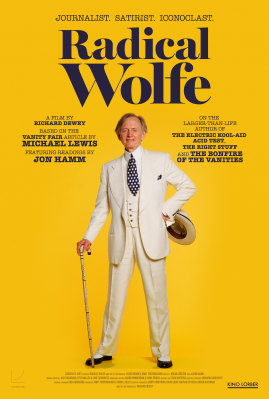
In 1973, Wolfe edited a collection of these articles in the book The New Journalism.
Dewey explains in press notes that an influential profile of Wolfe in Vanity Fair by Michael Lewis provided a “blueprint for telling Tom’s life story in Radical Wolfe” and “adapting the article into a documentary.”
Wolfe was an early influence on the New Orleans-born Lewis, who went on to write Moneyball, The Blind Side and The Big Short, which—like several of Wolfe’s books—were adapted into films.
Dewey’s doc chronicles Wolfe’s career, his groundbreaking article for Esquire in 1963—its full title was “There Goes (Varoom! Varoom!) That Kandy Kolored (Thphhhhhh!) Tangerine-Flake Streamline Baby (Rahghhhh!) Around the Bend (Brummmmmmmmmmmmmmmm…)”—and evolution from a newspaper beat reporter to covering the Beats and emerging counterculture in his landmark 1968 book The Electric Kool-Aid Acid Test.
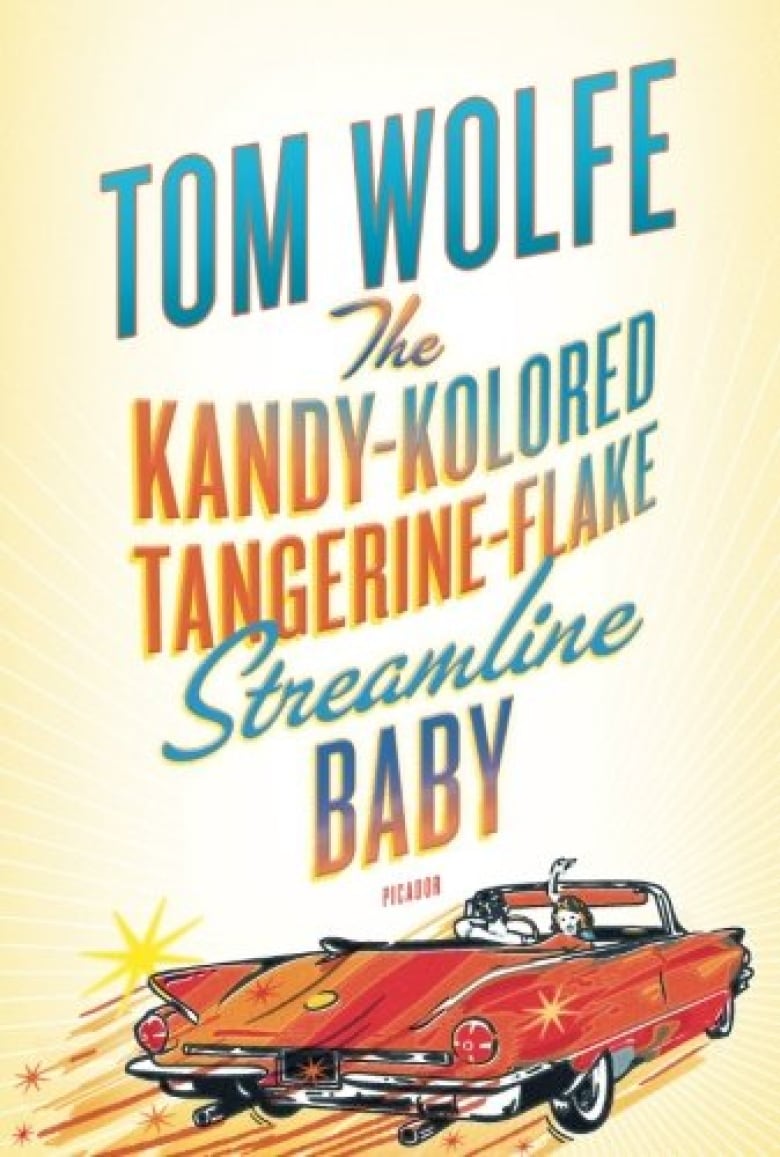
Immersing himself with that book’s subjects, Wolfe rode cross country with One Flew Over the Cuckoo’s Nest author Ken Kesey and the Merry Pranksters in their psychedelically colored repurposed school bus named “Further.”

If these hippies explored inner space with LSD, Wolfe also blasted off into the rarefied realm of America’s astronauts in 1979’s The Right Stuff. Its 1983 screen adaptation was nominated for seven, and scored four, Academy Awards, including Best Picture (although, interestingly, it was not nominated in the screenwriting category).
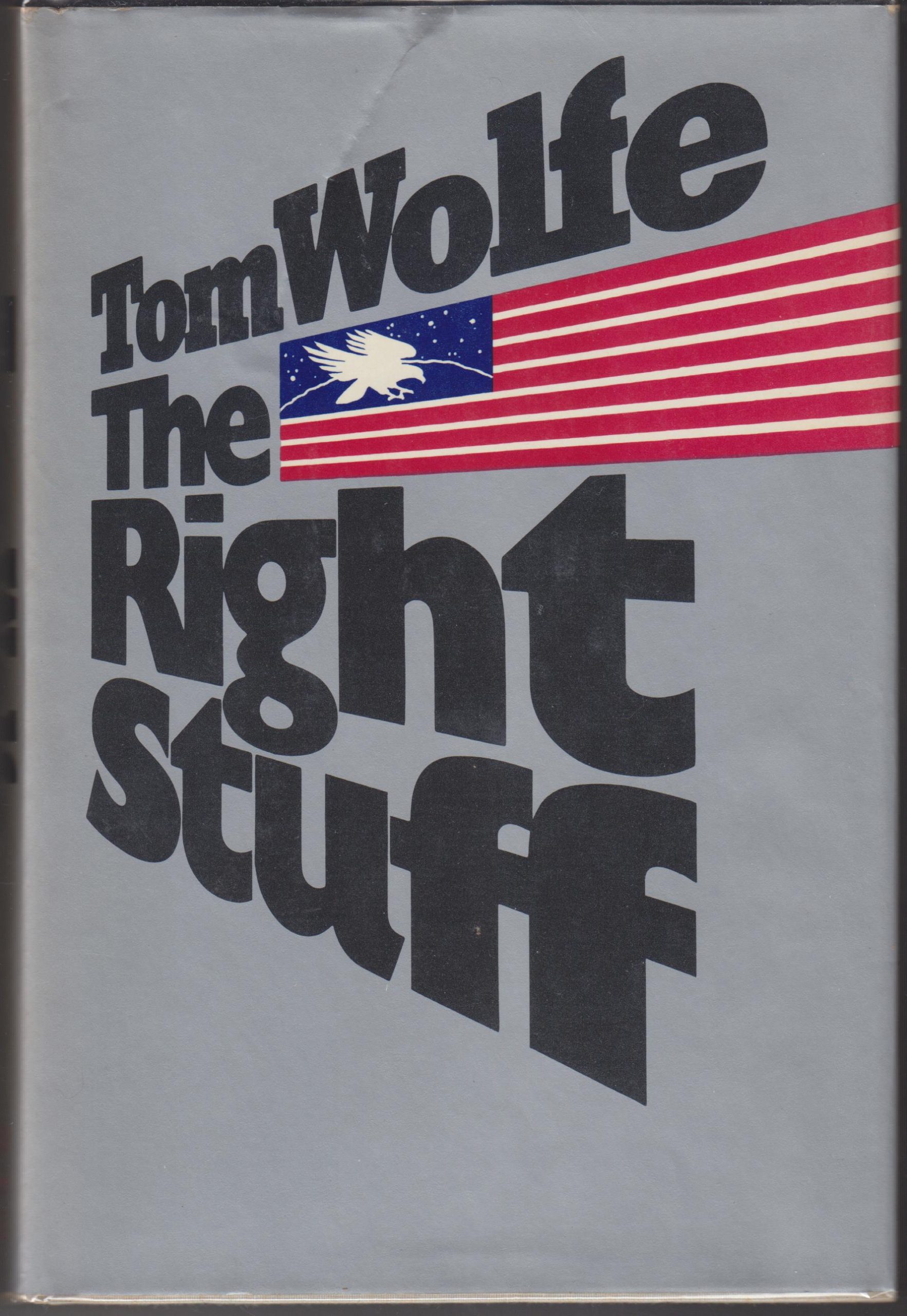
Wolfe was born and raised in a conservative milieu in Richmond, Virginia, and it showed. It may have been Wolfe’s contemporary, Norman Mailer, who coined the phrase “Advertisements for Myself,” but the commercially clever Wolfe shrewdly branded himself, often dressing like a dandy in a white three-piece suit that made him stand out—on the streets of Manhattan, his adopted hometown, and on the TV talk show circuit, of which the glib self-promoter was a habitue. (On-screen, Wolfe demurs, noting that white suits are not unusual south of the Mason-Dixon Line.)
But more importantly, beneath Wolfe’s persona of the genteel Southerner was a rapier-like wit and a quill often dripping with venom. As fellow author Gay Talese says on-screen in Radical Wolfe, “You’d never know such a polite person with a pen in his hand could be a terrorist.” The controversial Wolfe’s literary brand was that he often cut toward the right, skewering modernists, the New Left and assailing their sacred cows, from painters to Panthers.
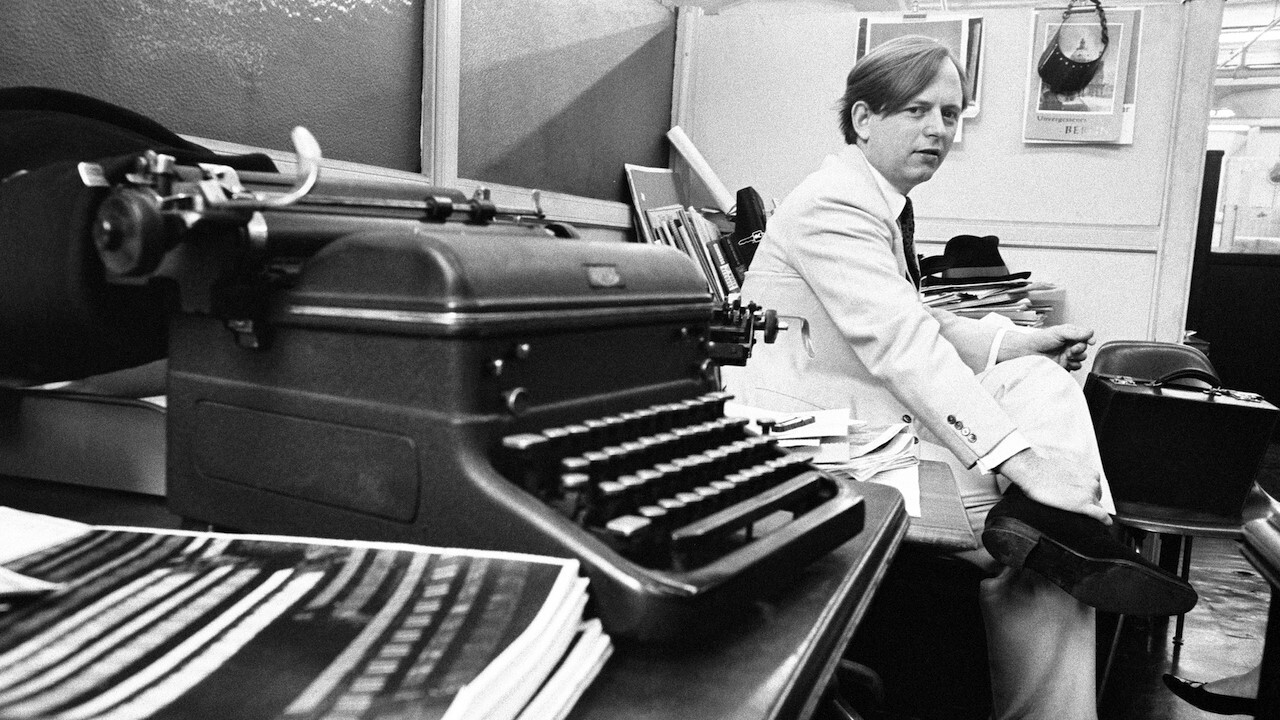
Wolfe’s 1975 The Painted Word is a frontal assault on Modern Art, in particular Abstract Expressionism. As the title implies, Wolfe opts in favor of representational, figurative art. It is as if he extols the virtues of magazine illustrator Norman Rockwell over the action painting of Jackson Pollack. Indeed, the cover of some versions of The Painted Word used Rockwell’s The Connoisseur, in which a well-dressed gentleman is seen from behind as he stares intently at a Pollack-like drip painting. In 1981’s From Bauhaus to Our House the culturally conservative critical eye of Wolfe pursues a similar tack in the world of architecture, eschewing and chewing out the International Style and Modern Architecture favored by Walter Gropius and Le Corbusier in favor of more tradition-bound designs for buildings and houses.
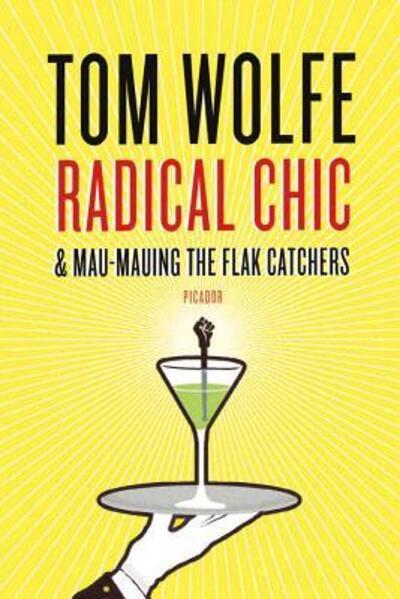
Throughout the documentary right-leaning writers such as Christopher Buckley (son of the National Review’s William F. Buckley, Jr., the high priest and idiot savant of post-war conservatism) and author Niall Ferguson praise their fellow conservative acolyte. Wolfe’s apotheosis of right-wing lampooning of things and people who dare break with tradition and tilt Left is 1970’s Radical Chic & Mau-Mauing the Flak Catchers.
In his October 2015 Vanity Fair article “How Tom Wolfe Became…Tom Wolfe,” Michael Lewis wrote: “I was 11 or maybe 12 years old when I discovered my parents’ bookshelves…The book I still remember taking down from the shelf was Radical Chic & Mau-Mauing the Flak Catchers…The cover showed a picture of a bored-looking blonde housewife nestled in the lap of a virile black man….It described a cocktail party given in the late 1960s for the Black Panthers by Leonard Bernstein in his fancy New York City apartment,” which Wolfe deceptively attended, posing as an invited guest.
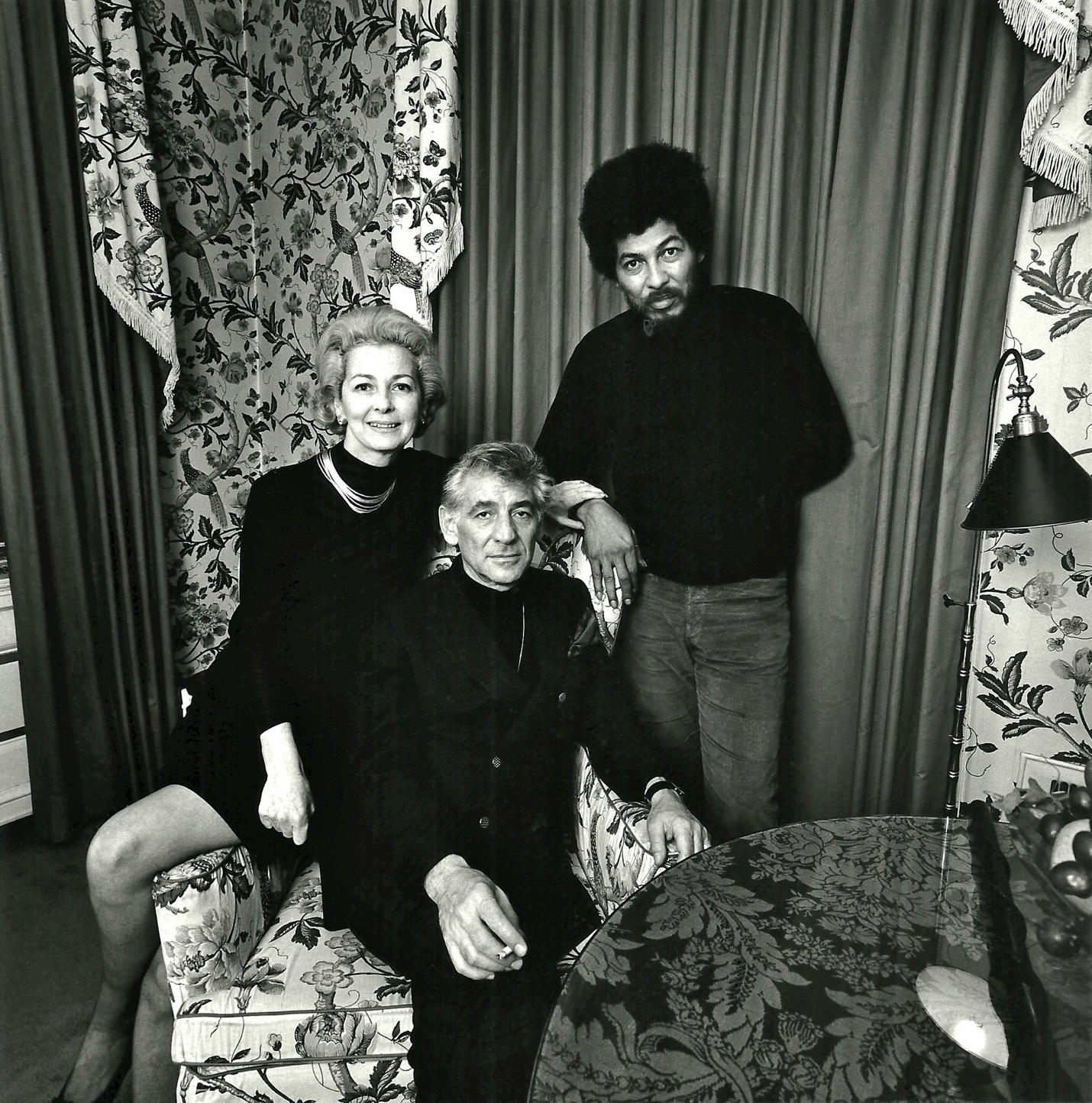
In Radical Chic—the phrase originally appeared in Wolfe’s 1970 New York Magazine piece, the renowned composer and New York Philharmonic conductor and music director, as well as his family and guests, are mocked as objects of ridicule for trying to raise funds for the legal defense of the beleaguered Panther 21 and to help support their families in the Bernsteins’ posh Park Avenue duplex apartment. These well-to-do whites are pictured by Wolfe as being merely limousine liberals, elite poseurs trying to look cool by helping their little brown brothers, perhaps out of a sense of guilt (as opposed to conscience and concerns about civil liberties).
This is the best part of the ironically titled Radical Wolfe because, as Dewey observes in the press notes, it gives the filmmaker the opportunity “to explore the real life consequences of Tom’s writing on people…” One of them is Jamal Joseph, who was one of the Panther 21 (which included Afeni Shakur, mother of rapper Tupac Shakur), Black Panther Party members who were on trial for allegedly plotting bomb and rifle attacks on police stations and an education office in New York City. On-screen, Joseph laments that Tom Wolfe’s cutting Radical Chic article-cum-book had the effect of helping to dry up fundraising for radical causes among the progressive-leaning intelligentsia and other well-to-do, well-meaning people. In 1971, after an eight-month trial—one of the longest in New York history—the jury acquitted the Panther defendants of all 156 charges in just a few hours.
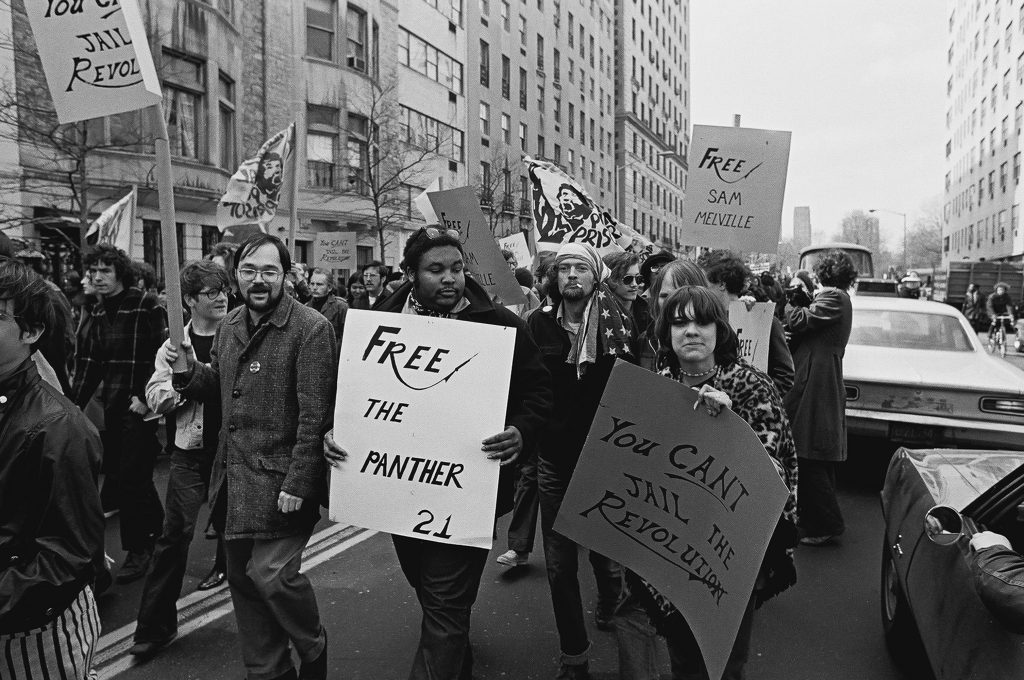
Words have power and, as the documentary shows, when Tom Wolfe was confronted years after his Radical Chic was published and was asked whether he regretted his acid-tongued broadside—that also had the negative effect of shaming and harming the stature and standing of the Bernsteins, who were, unlike Wolfe, on the right side of history—the dapper author callously professed to have none. After all, he was the New Journalism guru who also says in the documentary: “There was a so-called ‘objective voice’ and I frankly found it absolutely boring.”
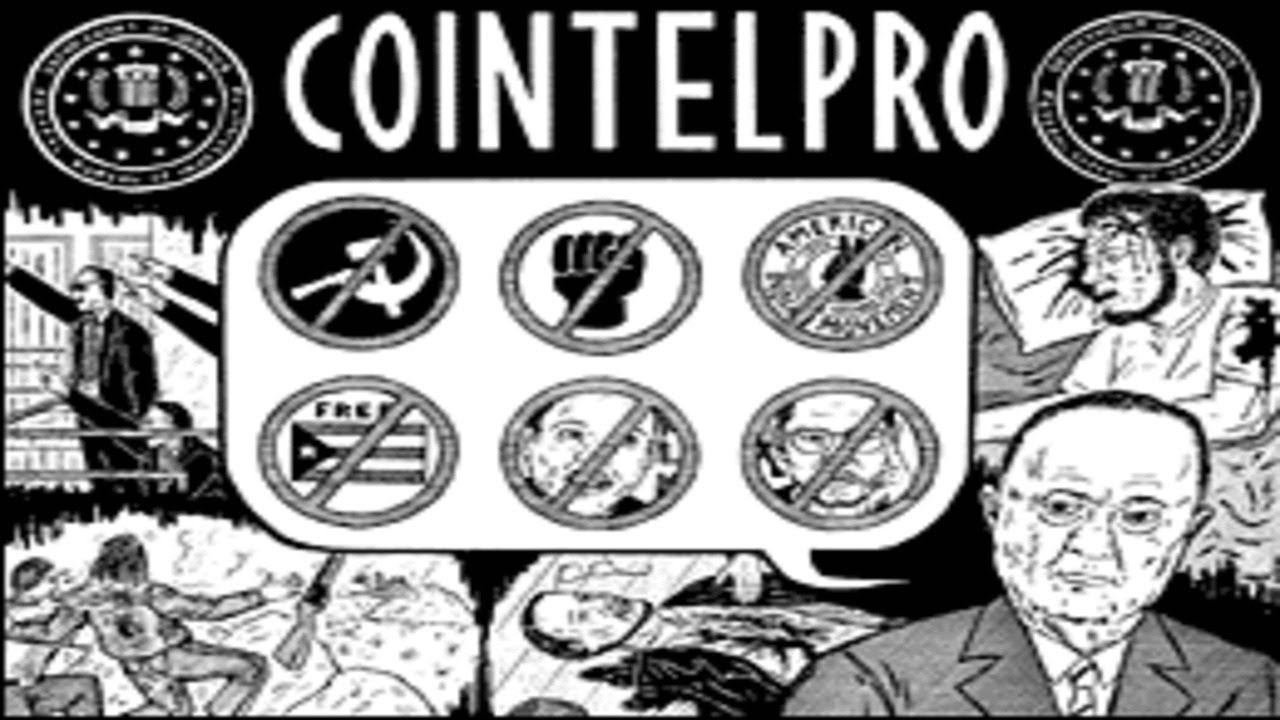
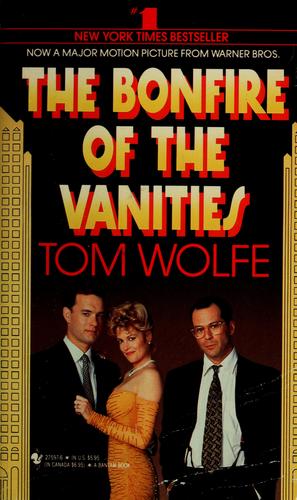
By damaging the ability of beleaguered New Left groups to fundraise for their legal defense, etc. – especially as they came under attack by the Nixon regime and J. Edgar Hoover’s FBI—Wolfe played a counterrevolutionary role, one which he profited from immensely. (Radical Wolfe includes scenes shot inside of Wolfe’s pricey townhouse in Manhattan’s posh Silk Stocking District.)
The documentary does not allege that he was consciously acting in league with COINTELPRO, but Radical Chic was, in effect, COINTELPRO’s literary equivalent. Radical Chic & Mau-Mauing can arguably be viewed as a forerunner of what is now referred to as “the right-wing media ecosystem.”
Radical Wolfe covers the writer’s literary conversions. In 1987, one of the prophets of New Journalism turned his pen to writing explicitly fiction with The Bonfire of the Vanities. Although the racially charged novel was a bestseller, Brian De Palma’s 1990 movie adaptation starring Tom Hanks was a colossal box office bomb. Wolfe went on to write four more books of fiction, including 1998’s A Man in Full. A Netflix TV miniseries based on the latter was released in 2023.
Wolfe died at age 88 in 2018. Dewey’s well-made documentary combines archival footage, clips of some of Wolfe’s countless television appearances, including on The Tonight Show with Johnny Carson and Firing Line with William F. Buckley, Jr., Dewey’s original interviews with subjects, plus Mad Men’s Jon Hamm reading selected writings off-screen. While some hail Tom Wolfe as a great American author, others may criticize him for writing the wrong stuff that was reactionary chic.
Radical Wolfe is 76 minutes in length and was theatrically released on September 15.

CovertAction Magazine is made possible by subscriptions, orders and donations from readers like you.
Blow the Whistle on U.S. Imperialism
Click the whistle and donate
When you donate to CovertAction Magazine, you are supporting investigative journalism. Your contributions go directly to supporting the development, production, editing, and dissemination of the Magazine.
CovertAction Magazine does not receive corporate or government sponsorship. Yet, we hold a steadfast commitment to providing compensation for writers, editorial and technical support. Your support helps facilitate this compensation as well as increase the caliber of this work.
Please make a donation by clicking on the donate logo above and enter the amount and your credit or debit card information.
CovertAction Institute, Inc. (CAI) is a 501(c)(3) non-profit organization and your gift is tax-deductible for federal income purposes. CAI’s tax-exempt ID number is 87-2461683.
We sincerely thank you for your support.
Disclaimer: The contents of this article are the sole responsibility of the author(s). CovertAction Institute, Inc. (CAI), including its Board of Directors (BD), Editorial Board (EB), Advisory Board (AB), staff, volunteers and its projects (including CovertAction Magazine) are not responsible for any inaccurate or incorrect statement in this article. This article also does not necessarily represent the views the BD, the EB, the AB, staff, volunteers, or any members of its projects.
Differing viewpoints: CAM publishes articles with differing viewpoints in an effort to nurture vibrant debate and thoughtful critical analysis. Feel free to comment on the articles in the comment section and/or send your letters to the Editors, which we will publish in the Letters column.
Copyrighted Material: This web site may contain copyrighted material the use of which has not always been specifically authorized by the copyright owner. As a not-for-profit charitable organization incorporated in the State of New York, we are making such material available in an effort to advance the understanding of humanity’s problems and hopefully to help find solutions for those problems. We believe this constitutes a ‘fair use’ of any such copyrighted material as provided for in section 107 of the US Copyright Law. You can read more about ‘fair use’ and US Copyright Law at the Legal Information Institute of Cornell Law School.
Republishing: CovertAction Magazine (CAM) grants permission to cross-post CAM articles on not-for-profit community internet sites as long as the source is acknowledged together with a hyperlink to the original CovertAction Magazine article. Also, kindly let us know at info@CovertActionMagazine.com. For publication of CAM articles in print or other forms including commercial internet sites, contact: info@CovertActionMagazine.com.
By using this site, you agree to these terms above.
About the Author
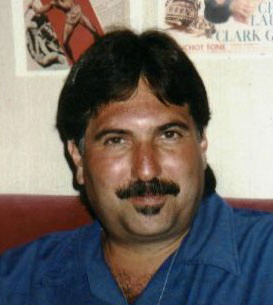
Ed Rampell is an L.A.-based film historian and critic who also reviews culture, foreign affairs and current events.
Ed can be reached at edrampel@gte.net.

